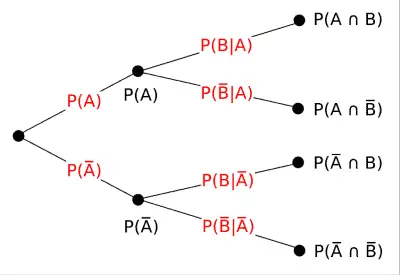Monty Hall was a Canadian television and radio personality, best known for being the long running host of the popular game show Let’s Make a Deal.
One of the games that was frequently featured on Let’s Make a Deal became known as the Monty Hall Problem, fascinating mathematicians the world over.
Well, that may be a bit of an exaggeration, but it’s an interesting problem nonetheless. Let’s dig in.

Monty Hall Problem Statement
The host, Monty Hall, shows the contestant (let’s call her Mary) three identical doors. Behind one of the doors is a brand new car; behind each of the other two doors is a gag prize like a goat or something to that effect.

Mary must select one of the doors and will win the prize behind that door. Before Monty reveals what is behind the door Mary selected, he reveals what is behind one of the other two remaining doors.
This door is always a losing door. Monty then presents Mary with an option. She can stick with her original choice OR she can switch her choice to the other unopened door.
The question is: should Mary switch her choice?
Most people think that it doesn’t matter if the contestant sticks with their original choice or switches – the probability of winning remains the same: ⅓. WRONG!

This is a very difficult problem to understand. Intuitively, it seems that the probability of selecting a door with the car behind it is 1 out of 3.
While this is certainly true when the contestant makes her initial guess, the minute that Monty Hall reveals a door with the gag gift behind it, we now have a different situation. The randomness has gone away. There is an added condition.
To help us understand this, remember that Monty Hall always reveals a door with the gag prize. He has insider knowledge so randomness has gone out the door, forgive the pun.
Perhaps the problem can be stated this way: given that the car is NOT behind Door number 2 (or whichever door Monty reveals), what is the probability that the car is behind the other door that the contestant didn’t choose?
To help us see what’s happening here, let’s make a table with the scenario that the car is behind Door 1. Mary’s choices are represented with a ✔️in the table.
For example, in the first case, if Mary chooses Door 1 and stays with that choice, she wins the car. If she switches to whichever door Monty doesn’t open (either Door 2 or Door 3) she will lose.
| Door 1 | Door 2 | Door 3 | Result | |
| 🚗 | 🐐 | 🐐 | ||
| Original Choice | ✔️ | – | – | |
| Stay with Original Choice | ✔️ | W | ||
| Switch – remember, Monty eliminated either door 2 or 3 so switching will give the contestant one choice: a goat occupied door. | ✔️ or | ✔️ | L | |
| Original Choice | ✔️ | |||
| Stay with Original Choice | ✔️ | L | ||
| Switch – Monty knows that the car is behind Door 1 so he has to reveal the goat behind Door 3. Switching results in the correct Door 1. | ✔️ | W | ||
| Original Choice | ✔️ | |||
| Stay with Original Choice | ✔️ | L | ||
| Switch – Monty knows that the car is behind Door 1 so he has to reveal the goat behind Door 2. Switching results in the correct Door 1. | ✔️ | W |
Let’s ponder this. In the case where the car is behind Door 1, if the contestant stays with her original choice, she’ll win one time. If she switches, she’ll win two times. (Just count the wins and losses in the last column.)
The above chart only focuses on the situation where the car is behind Door 1. If we were to work through the probability for the situation where the prize is behind Door 2, then Door 3, we will still get the same results: if the contestant stays, the probability of winning the car is 1/3; switching gives a probability of 2/3.
Overall, we can generalize to say that the probability of winning the car if the contestant stays with her original guess is 1/3. If she switches her choice, the probability the contestant will win is 2/3. Fascinating, right?
The History of the Monty Hall Problem
Marilyn Vos Savant has the highest recorded IQ according to the Guiness Book of World Records. She runs a daily column, Ask Marilyn, where she answers questions related to logic puzzles, math questions, and academic problems that may stump readers.
In 1990, she explained the probability involved in the Monty Hall Problem, causing an uproar among readers, even the mathematical elite. She received thousands of letters, was called various offensive names, and generally created a lot of math controversy surrounding her solution.
Even the renowned Hungarian mathematician Paul Erdős disagreed with her.
Marilyn stood by her original solution. She published a follow up column, affirming her position and attempting more explanation.
Again, she received many letters. This time, she asked schools to conduct simulations of the game in class.
She also said, “the original answer defines certain conditions, the most significant of which is that the host always opens a losing door on purpose. Anything else is a different question.”
She then published the results of the schools’ findings, which included data from over 1,000 experiments. After this, many of those who disagreed with Marilyn originally, changed their minds and agreed with her solution.
At one point, to help her readers understand the solution a bit better, Marilyn asked her readers to imagine a variation of the game. In this scenario, there are 1,000 doors, only one of which has a car and the other 999 have goats.
The contestant selects one door. Monty opens 998 other doors, all of which reveal goats. Monty once again asks the contestant if she wants to stay with her original choice or switch.
It seems more intuitive now that she should switch, right? Why is that? Well, initially, the contestant only has a 1 in 1,000 probability of choosing the door with the car. By staying with that choice, the contestant isn’t improving her odds of winning.
Why is the Monty Hall Problem so Difficult?
It’s tough to get past the simplicity from the onset of the game: the probability that the car is behind a specific door is 1 in 3. That is certainly true when the contestant makes her first choice.
And, 1 in 3 seems like a fixed probability. Monty Hall offering the switch seems like that can’t change the probabilities.
But, we have to bear in mind that Monty Hall isn’t selecting that door randomly. He is using his knowledge as the host and always reveals a door with a goat.
It also seems as though the probability has been reduced to ½. There are only 2 doors left, so now the probability that the contestant wins is 1 in 2, regardless of whether she stays or switches. Again, this is an oversimplification of the matter.
The statistician Jim Frost puts it this way,
“I consider the Monty Hall problem to be a statistical illusion. This statistical illusion occurs because your brain’s process for evaluating probabilities in the Monty Hall problem is based on a false assumption. Similar to optical illusions, the illusion can seem more real than the actual answer.”
Credit: statisticsbyjim
Some mathematicians use probability theorems to explain the perceived paradox of the Monty Hall problem. Check out this link for a detailed solution involving Bayes’ Theorem and conditional probability to explain the math behind the idea that switching is always the way to go: Bayes’ Theorem Solution to Monty Hall Problem.
Interested in conducting your own simulations of the game? Check out this link: Math Warehouse Monty Hall Simulation.
Hopefully, you’re now better equipped to understand probabilities. Or perhaps, you’re now more interested in participating in game shows!
I hope you found this article helpful. If so, please share it with someone who can use the information.
Don’t forget to subscribe to our YouTube channel & get updates on new math videos!
About the author:
Jean-Marie Gard is an independent math teacher and tutor based in Massachusetts. You can get in touch with Jean-Marie at https://testpreptoday.com/.


